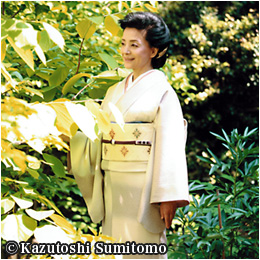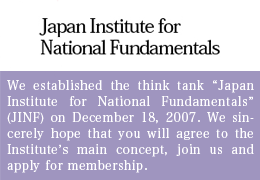Liberal American Commentator Delivers Pro-Chinese Criticism of Abe
On the heels of Prime Minister Shinzo Abe’s successful visit to Washington Feb. 21-22, the March/April issue of Foreign Affairs carries an article entitled: “Japan’s Cautious Hawks: Why Tokyo Is Unlikely to Pursue an Aggressive Foreign Policy.” Its author is Gerald Curtis, Burgess Professor of Political Science at Columbia University.
In 1971, Prof. Curtis published The Birth of a Japanese Diet Member (Simul Press, Tokyo) – a detailed account of the campaign of a candidate for the Japanese Diet, Bunsei Sato, after closely following him for over a year and a half in his constituency in Oita Prefecture, Kyushu. The success of this book, coupled with his fluency in Japanese, made Curtis highly popular in Japan at the time. What one sees permeating throughout the ten-page Foreign Affairs article can be described as the author’s wariness about the future course he anticipates the Abe administration to take, coupled with a rejection of the Japanese resolve to become a truly independent and self-reliant nation.
Pointing out that the victory of Abe’s Liberal Democratic Party (LDP) last December was the result “not of his or his party’s popularity but rather of the voters’ loss of confidence in the rival Democratic Party of Japan,” Curtis writes: “Whatever the public’s motivations, however, the election has given Japan a right-leaning government and a prime minister whose goals include scrapping the constitutional constraints on Japan’s military, revising the educational system to instill a stronger sense of patriotism in the country’s youth, and securing for Tokyo a larger leadership role in regional and world affairs. To many observers, Japan seems to be on the cusp of a sharp rightward shift.”
Predicting that Abe “may then press his revisionist views” if his party “can secure a majority of seats” in this summer’s upper house elections, Curtis says “(But) any provocative actions would have consequences,” warning:
“If, for example, he were to rescind statements by previous governments that apologized for Japan’s actions in World War II, as he has repeatedly said he would like to do, he not only would invite a crisis in relations with China and South Korea but would face strong criticism from the United States as well.”
While refusing to acknowledge Japan’s position regarding various issues related to the war, Curtis has also refused to recognize the Japanese posture towards China’s overbearing behavior in connection with the dispute over the Senkaku Islands in the East China Sea. Noting that Washington “would be obliged to support Tokyo in a conflict over the islands – even though it does not recognize Japanese sovereignty there,” Curtis infers as follows: “(But) the most recent flare-up was precipitated not by Chinese but by Japanese actions.”
Full Sympathy with China’s Claim
Curtis then calls former Tokyo governor Shintaro Ishihara a “nationalist,” questioning the wisdom of his announcing plans last April to purchase three of the Senkaku Islands which at the time had been leased to the Japanese government by a Japanese owner. These contentions by Curtis jibe perfectly with the assertions the Chinese Communist Party has persistently made.
In my view, Ishihara was driven to make that announcement by compelling circumstances, as the Japanese government had for so long failed to take effective action in the face of years of escalating aggression by China, which refuses to recognize Japanese sovereignty over these islands. Curtis notably fails to mention that Chinese aggression preceded Ishihara’s action, leading to the latest crisis.
At present, China continues to have government patrol ships infiltrate into Japanese waters around the Senkakus, threatening Japanese sovereignty by deploying frigates behind patrol ships and fighters in the air, sometimes violating Japanese territorial air space. To ease the tension, Curtis proposes that the US do two things, stressing:
“First, it must stand firm with its Japanese ally. Any indication that Washington might hesitate to support Japan in a conflict would cause enormous consternation in Tokyo.” When that happens, Curtis warns, “the Japanese right would have a field day…”
Curtis then urges Washington to use “all its persuasive power to impress upon both China and Japan the importance of defusing this issue,” continuing:
“Abe could take a helpful first step by giving up the fiction that no dispute over the islands exists. The Senkaku controversy is going to be on the two countries’ bilateral agenda whether the Japanese want it there or not. Abe’s willingness to discuss it would give China an opening to back down from its confrontational stance and would better align U.S. and Japanese policy.”
To admit that a territorial problem over the Senkakus exists between Tokyo and Beijing is to yield to the groundless claim by China that it rightfully owns the Senkakus. Therefore, to expect Abe to recognize the existence of a territorial problem involving the Senkakus is tantamount to demanding that Japan fully accept China’s claim to the islands. That is absolutely unacceptable to Japan.
In addition, Curtis expresses concern about the possibility that the Japanese will implement constitutional and legal revisions concerning the nature and scope of operations of the Japan Self-Defense Forces (JSDF), explaining that a major Japanese rearmament would “spur an arms race in Asia, heighten regional tensions (including between Japan and South Korea, another key U.S. ally) and threaten to draw Washington into conflicts…”
However, the entire Asian and Pacific region has already been gripped by tension caused by China’s abnormal military expansion. A weak Japan might very well invite China to veer out of control. That is why the US side reacted favorably during last month’s US-Japan summit as Tokyo communicated the seriousness with which it has recently started studying anew the feasibility of exercising the right to collective self-defense. There are voices in the US as well that call for a constitutional revision to help Japan become militarily stronger and more reliable. I wish to make clear that not every American subscribes to such a liberal view as is entertained by Mr. Curtis.
In addition to the misconceptions in the Curtis article that make me quite uncomfortable, I cannot help but notice that the Japanese edition of the magazine itself appears to have some serious problems – in terms of the quality of translation as well as editorial policy.
Unclear Editorial Intent
Plainly speaking, the Japanese translation of the Curtis article, contained in Volume 3, 2013 of the magazine’s Japanese edition, is marked by outright mistranslations along with what I would describe as “intentional” mistranslations. Allow me to cite some examples:
For instance, the original sentence pertaining to the part about the “most recent flare-up” over the Senkaku – “But the most recent flare-up was precipitated not by Chinese but by Japanese actions” – has been translated as follows: “But the most recent flare-up was precipitated not only by China but at least partially by Japanese actions.” I urge the reader to scrutinize the difference between the underlined parts of these sentences.
Why was Prof. Curtis’s arbitrary conclusion – that the heightened tension between Beijing and Tokyo has been singlehandedly precipitated by Japan – toned down to this extent in translation? Was it an editorial ploy aimed at averting readers’ criticism of the Curtis article? Either way, I would think the publisher has the responsibility to explain the reasons to the author, as well as its readers.
What about the following translation, then? I was more than slightly taken aback when I found out that the original sentence – “What worries Tokyo now is not the possibility of U.S.-China collusion; it is the prospect of strategic confrontation…” has been translated as: “What worries Tokyo now is not the risk of U.S.-China collision; rather, it is strategic confrontation…” (Also see the underlined parts; “the possibility of U.S.-China collusion” in the original sentence has been translated as “the risk of U.S.-China collision,” and “the prospect of strategic confrontation” as just “strategic confrontation,” eliminating “the prospect of.”)
At any rate, how can “U.S.-Chinese collusion” be translated as “U.S.-Chinese collision”? Presumably, it is a simple error, but it certainly is an error of a rather serious nature.
I am also puzzled by the Japanese edition’s decision to run a reprint of an old book review of Japan Is Back: Why Tokyo’s New Assertiveness Is Good for Washington (by Professor Kenneth Pyle, Century Foundation Books, New York; 2007) originally carried by the mother edition in its March/April 2007 issue, with Michael Green as the reviewer. It is a fine analysis of Japan for sure, but was written long before the days when China began intensifying its claim to the Senkakus. It was also written before North Korea conducted its second and third nuclear tests – and long before former President Lee Myung-bak landed illegally on one of the disputed Takeshima islets.
The political and security environments surrounding Japan have since undergone a sea change. Why, then, did the magazine’s editors decide to go ahead with a rerun of a six-year-old review? Did the board by any chance intend to take the edge off Curtis’s criticism of Japan by running the review of a work by the professor of the University of Washington, who is known to have a good understanding of Japan’s position? In any case, the intent of the editors is hard to fathom.
These are the reasons why I felt more than a little unnerved by the Curtis article, as well as the editorial policy and stance of the Japanese edition of Foreign Affairs.
(Translated from “Renaissance Japan” column no. 549 in the March 13, 2013 issue of The Weekly Shincho)








